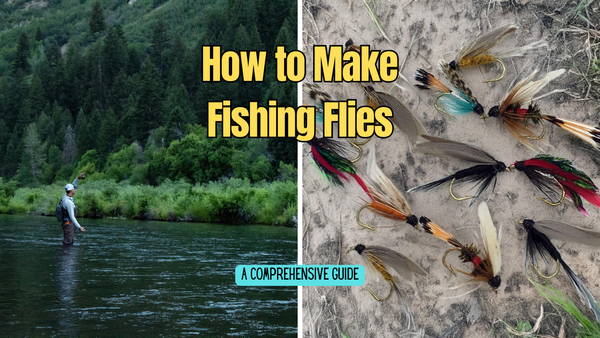When it comes to maintaining your griddle, whether it's a high-end Blackstone griddle or a simple cast iron cookware piece, the question often arises: do you have to clean a griddle every time you use it? The answer is crucial for both hygiene and the longevity of your griddle.
Key Takeaways:
- Regular cleaning maintains the griddle’s performance and safety.
- Proper techniques can extend the life of your griddle.
- Immediate cleaning post-use prevents stubborn residue build-up.

The Importance of Regular Cleaning
Cleaning your griddle after each use is essential to maintain its cooking efficiency and to ensure food safety. Residual food particles and grease can become carbonized when left on the griddle surface, leading to a deterioration in both taste and health standards.
The Basics of Griddle Cleaning
Every time you cook, food residues, and oils settle on the griddle surface. If these are not cleaned off, they can attract bacteria, emit unpleasant smells, and even affect the taste of your next meal. Therefore, cleaning after every use is crucial to prevent these issues.
Step-by-Step Guide to Cleaning Your Griddle
Cleaning your griddle doesn't have to be a daunting task. Here’s a simple guide to keep your griddle in pristine condition after each use.
Right After Cooking: The Initial Clean
Immediately after cooking, while the griddle is still warm (not hot), it’s advisable to scrape off food particles and excess grease. Using a metal scraper or a griddle scraper, gently push all residues into the grease trap or wipe them off with a paper towel.
Applying the Cleaning Agents
Once the surface is free of solid particles, it’s time to focus on the greasy film. A few squirts of soapy water or a degreaser can be applied to the surface. Using a grill stone or a scrubbing pad, work in the cleaning agent to remove any oily residue. Rinse the surface with hot water and wipe it down with a damp cloth.
Maintaining the Seasoning Layer
A well-seasoned griddle not only cooks food better but also features a natural non-stick surface. Cleaning your griddle properly after each use helps maintain this seasoning layer.
The Role of Oils in Griddle Cooking and Maintenance
Choosing the right type of oil can make a significant difference in both cooking and maintaining your griddle. Oils like olive oil, canola oil, and even shortening are great for creating a non-stick surface and can help in forming a robust seasoning layer on cast iron griddles. When you cook, apply a thin layer of oil to the cooking surface before heating the griddle. This practice not only prevents food from sticking but also contributes to an even heat distribution, ensuring your food cooks uniformly.
After cooking, the oil plays another crucial role in the cleaning process. While the griddle is still warm, applying a small amount of oil and using a griddle scraper can help lift food particles and excess grease without damaging the surface. For deeper cleaning, a few squirts of water mixed with dish soap can be used followed by scrubbing with a grill stone or metal scraper. This helps in removing any stubborn residues and maintains the integrity of the griddle’s seasoning layer, ensuring it remains rust-free and ready for your next cooking adventure.
Avoiding Harsh Chemicals
It’s crucial to avoid harsh chemicals that can strip away the seasoning layer. Stick to mild dish soap and warm water for most cleaning sessions. For tougher jobs, consider using a paste made from kosher salt and water, which can scrub away grime without damaging the underlying seasoning.
Optimizing Heat Zones for Even Cooking
When using a griddle understanding and managing heat zones can significantly enhance your cooking experience. Griddles typically have different heat zones, which can be used strategically to cook various items at their ideal temperatures. For instance, when you're cooking breakfast foods like pancakes and eggs on the same griddle, you can set up distinct heat zones. Pancakes can cook gently on a lower heat area, while eggs fry up quickly on a hotter part. This method ensures each item is cooked perfectly, maintaining a delicious food quality and preventing any from being over or undercooked.
Moreover, managing these heat zones isn't just about the cooking process but also impacts the cleaning routine. Areas of the griddle that are subjected to higher heat might accumulate burnt food particles more quickly, necessitating a more vigorous cleaning effort. Conversely, less intense heat zones might only need a quick wipe down. After cooking, let the griddle cool slightly, then tackle the cleaning zone-wise, starting from the hottest to the coolest. This approach not only makes cleaning more efficient but also helps in maintaining the griddle’s surface in top condition.
Special Considerations for Different Types of Griddles
Depending on the type of griddle you own, the cleaning process might vary slightly. Here’s what you need to know for different materials.
Cast Iron Griddles
Many camping griddles are made of cast iron. Cast iron requires careful handling to maintain its seasoning and prevent rust. Always dry your cast iron griddle completely after washing and coat it with a protective layer of oil.
Stainless Steel and Non-Stick Griddles
These griddles are generally easier to clean due to their less porous surfaces. However, avoid using metal scrapers or harsh abrasives that can damage the surface.
Cleaning Griddles After Cooking Specific Foods
Certain foods can make cleaning more laborious due to their residue. Here’s how to handle them.
After Cooking Sticky or Sugary Foods
Foods like pancakes or glazed bacon can leave behind a sticky residue. It’s important to soak these areas with warm soapy water for a few minutes before scrubbing, to loosen the hardened sugars.
After Cooking High-Fat Foods
Fatty foods like burgers or bacon can leave a significant amount of grease. Ensure all excess oil is scraped off and use a degreaser if necessary to remove any lingering fat.
Tools and Products for Effective Cleaning
Having the right tools can make the cleaning process much easier and more effective.
Essential Cleaning Tools
A good quality griddle scraper, a non-abrasive scrub pad, and a few absorbent paper towels are essential. For deeper cleans, a grill stone can be very effective.
Recommended Cleaning Products
For everyday cleaning, mild dish soap and warm water are sufficient. For more intensive cleaning, specialized griddle cleaners are available that are designed to handle tough residues without damaging the griddle surface.

Summary
Cleaning your griddle after every use is essential to maintain its functionality and longevity. Immediate cleaning helps prevent food particles and grease from becoming carbonized, which can affect taste and hygiene. Regular maintenance of the seasoning layer ensures a non-stick cooking surface and prevents rust. Using the right tools and cleaning products can make this task easier and protect your investment in quality cookware.

FAQs
Can I use a metal spatula for cleaning my griddle?
Yes, a metal spatula can be used to scrape off food residues, but be gentle to avoid scratching the surface, especially if it’s a non-stick griddle.
How often should I re-season my cast iron griddle?
Re-season your cast iron griddle whenever you notice food starting to stick, or the surface looks dull and dry.
Is it safe to clean my griddle with just water and no soap?
While water can remove loose particles, using a mild soap helps in effectively removing oil and grease, ensuring a thoroughly clean cooking surface.
Related articles:











